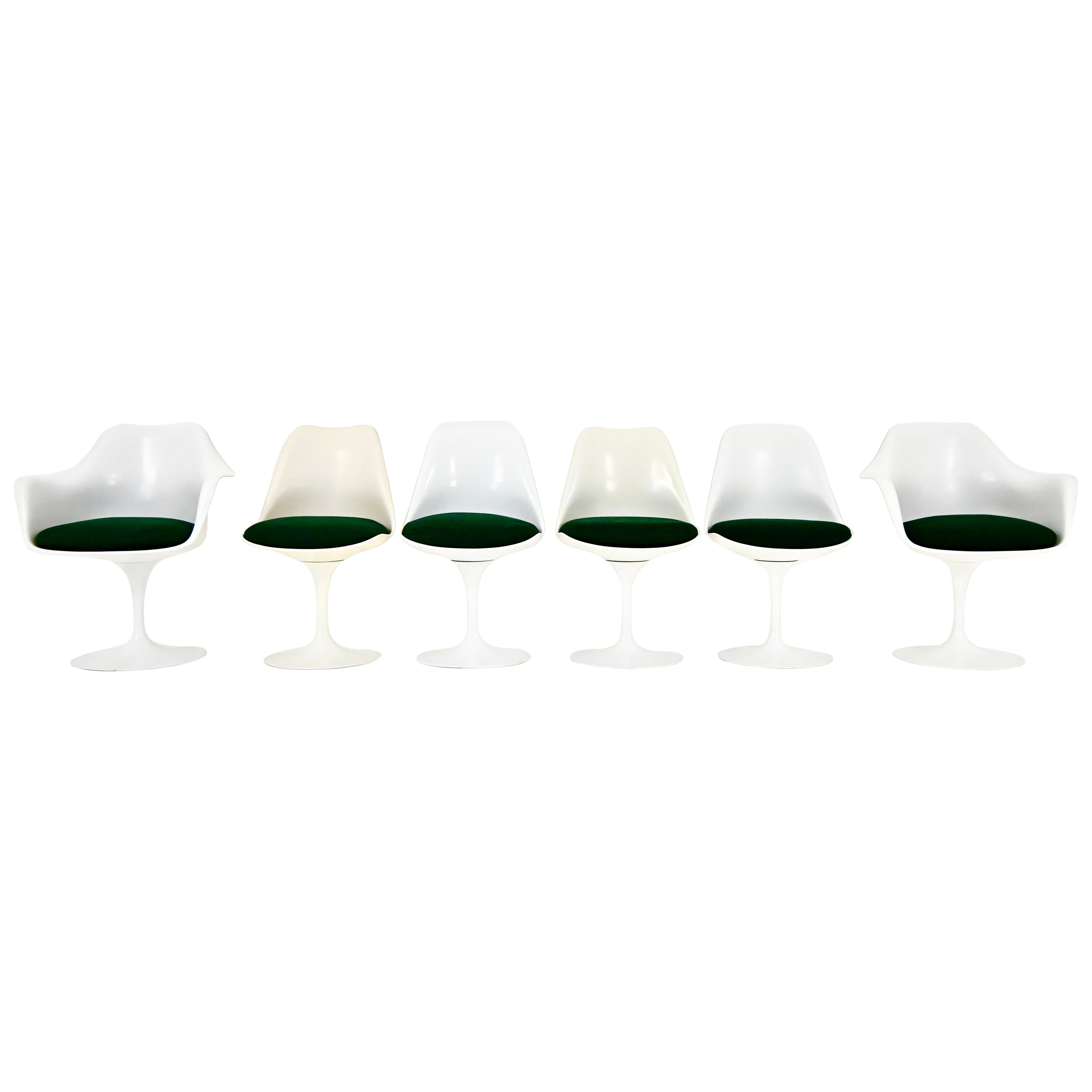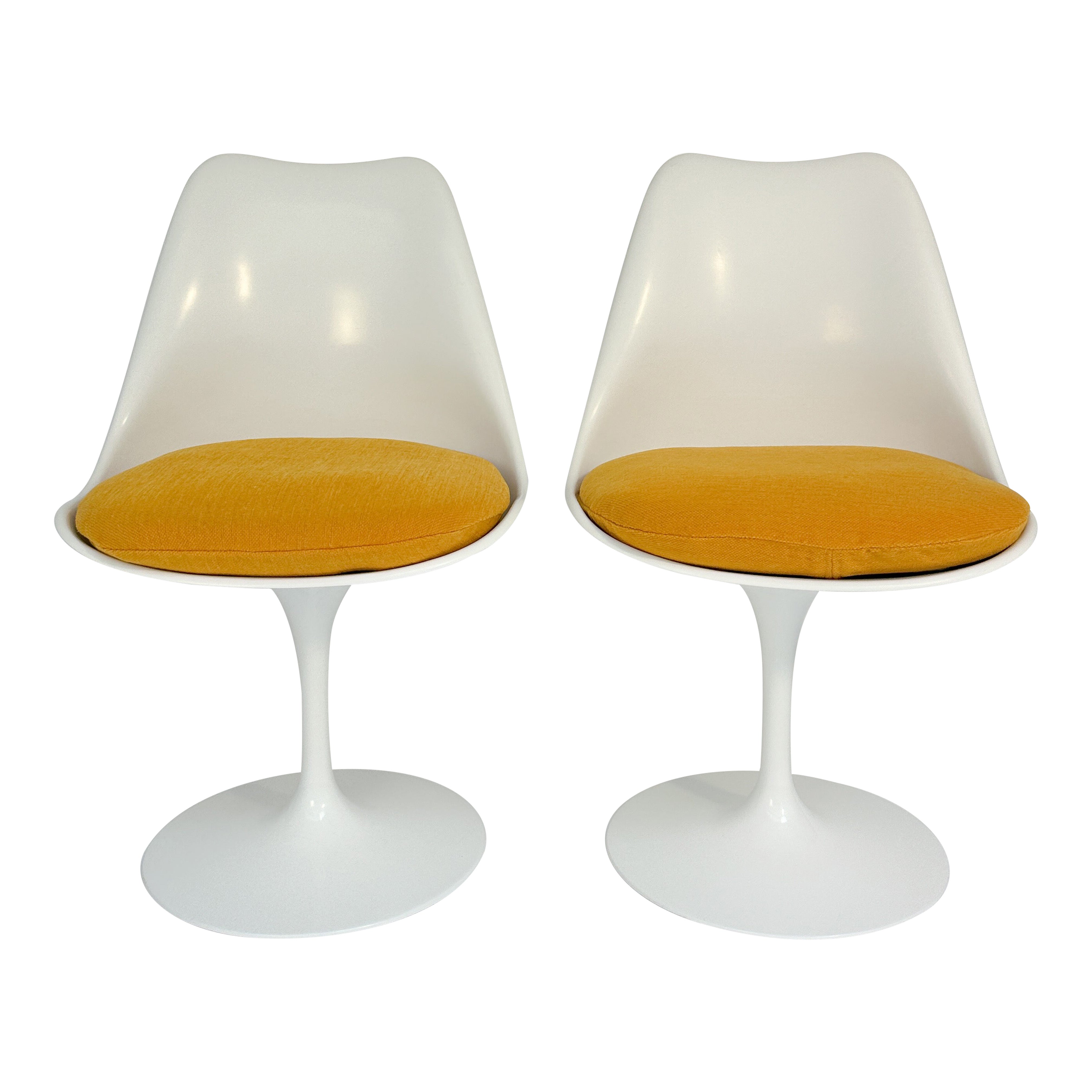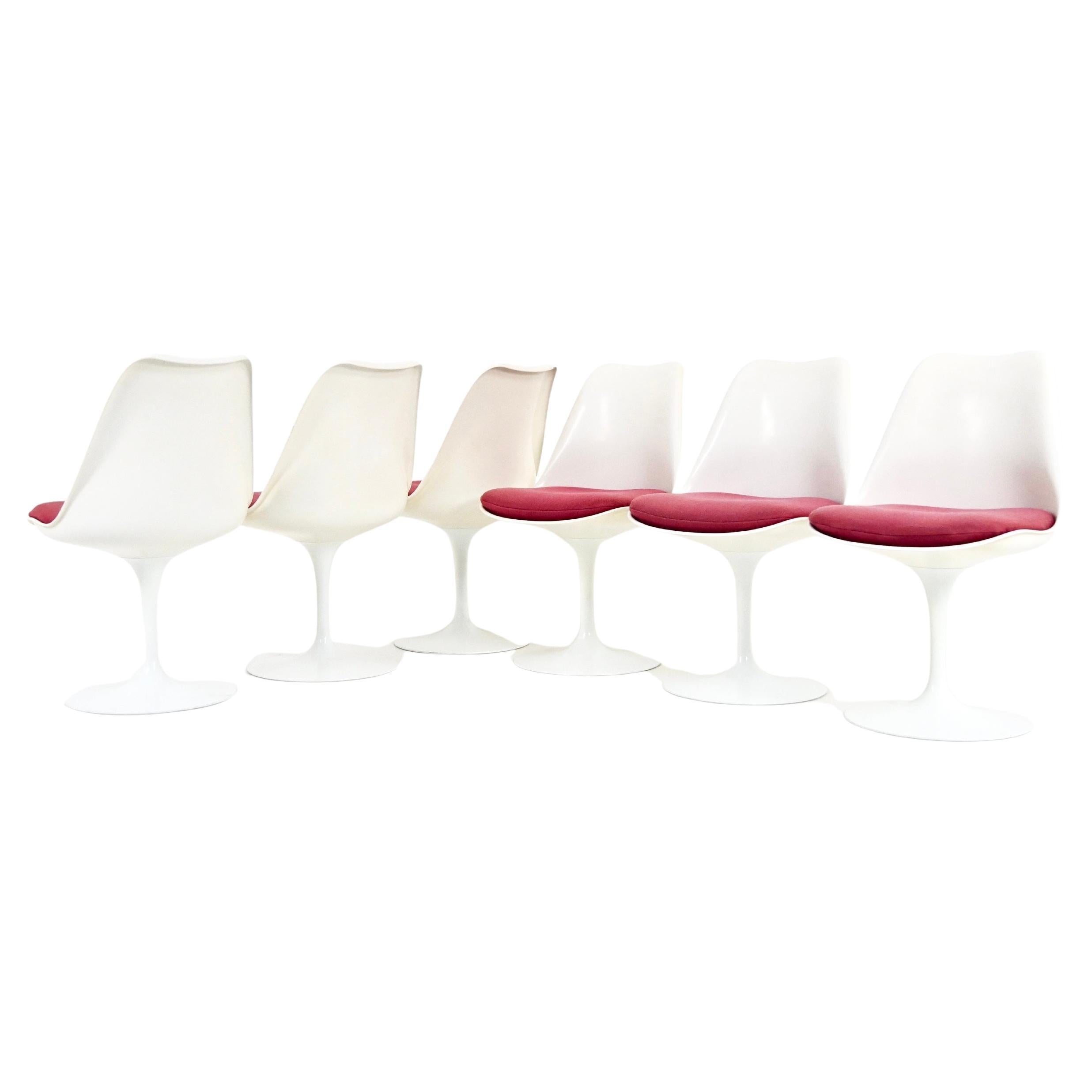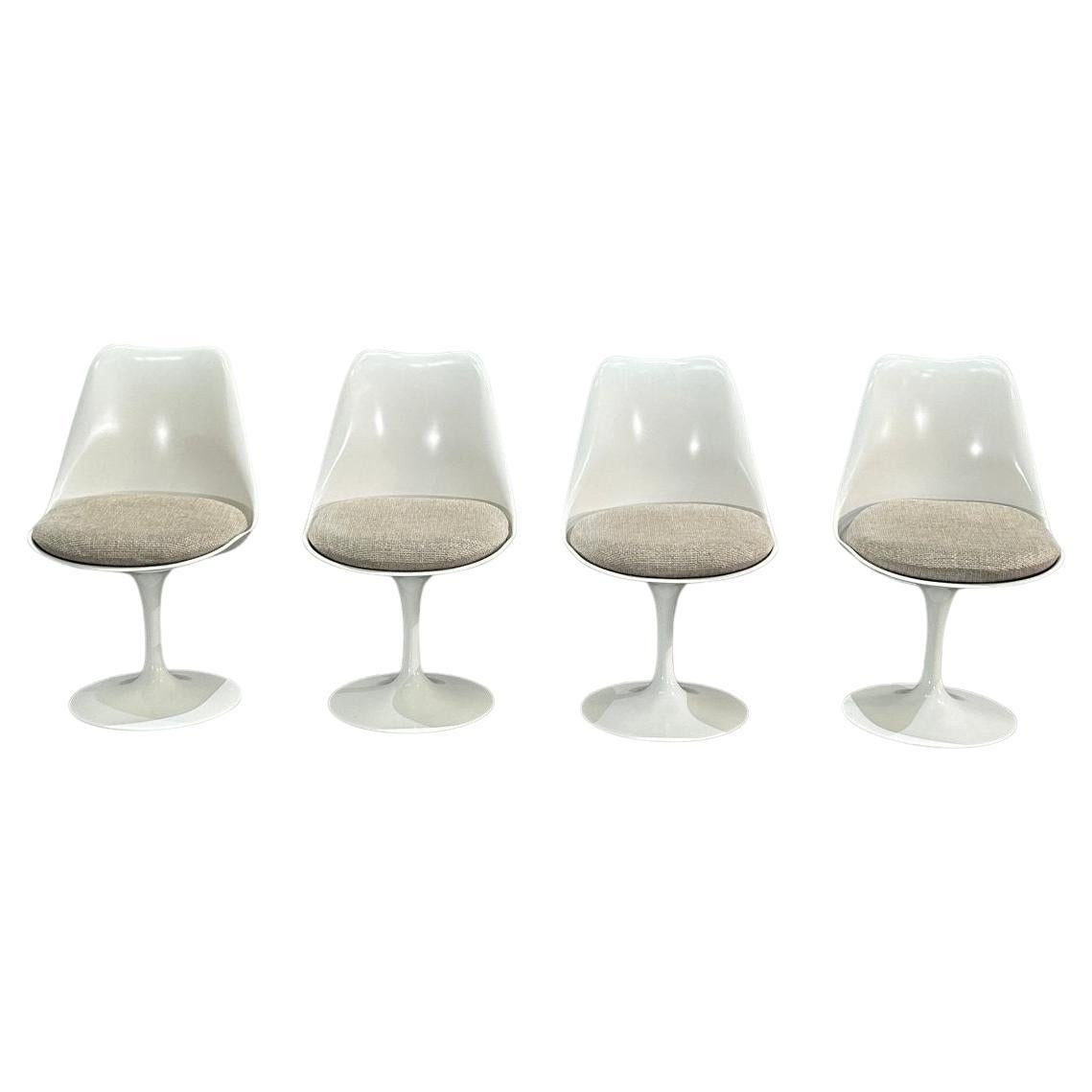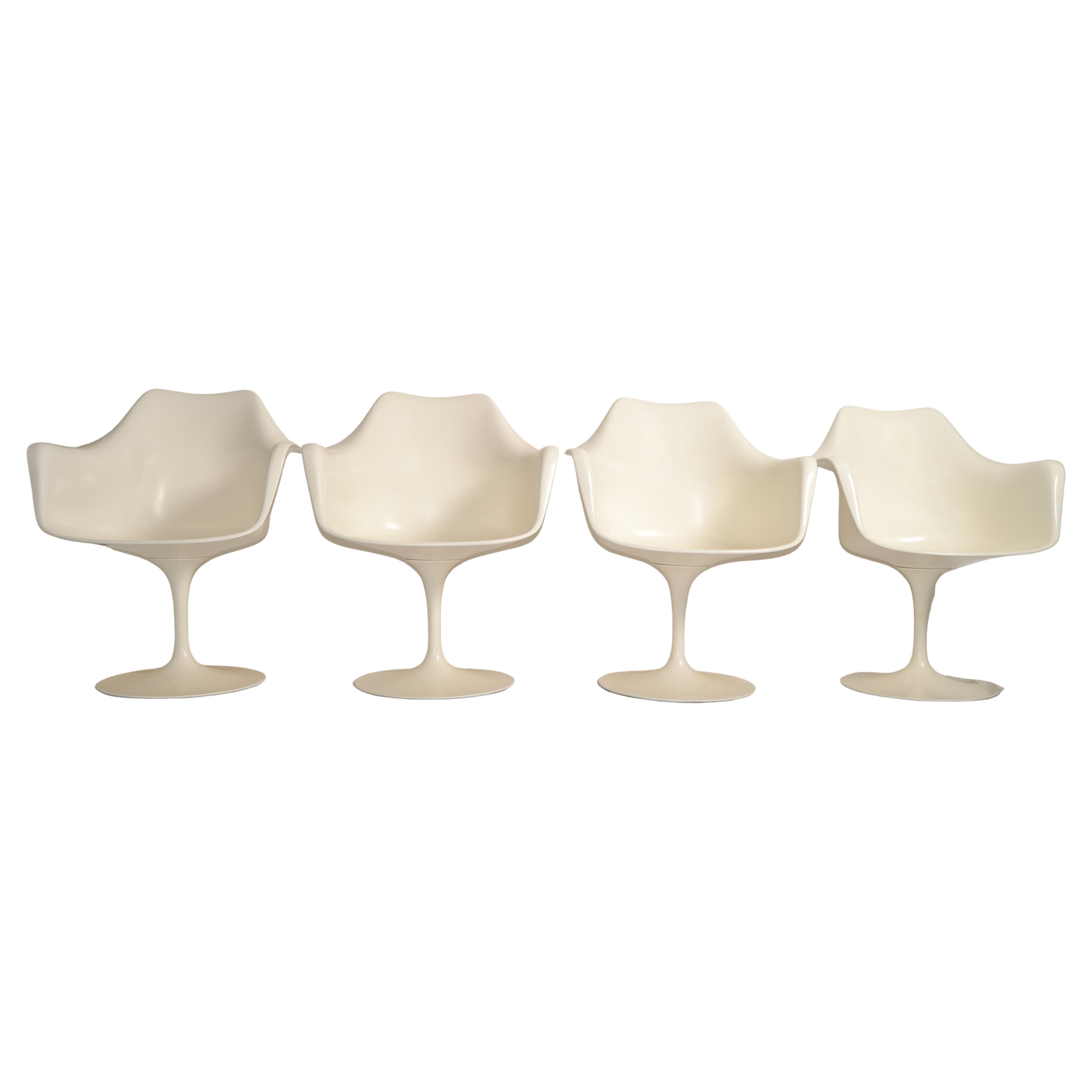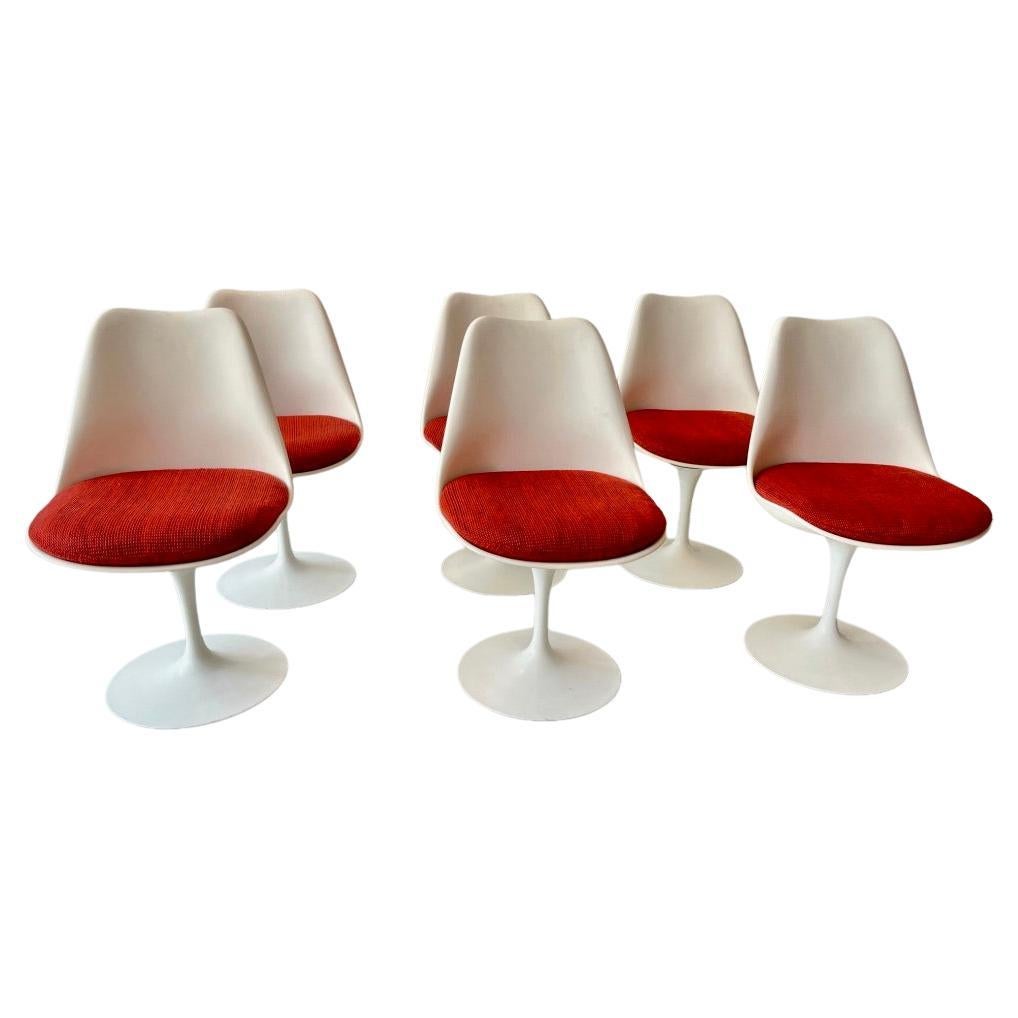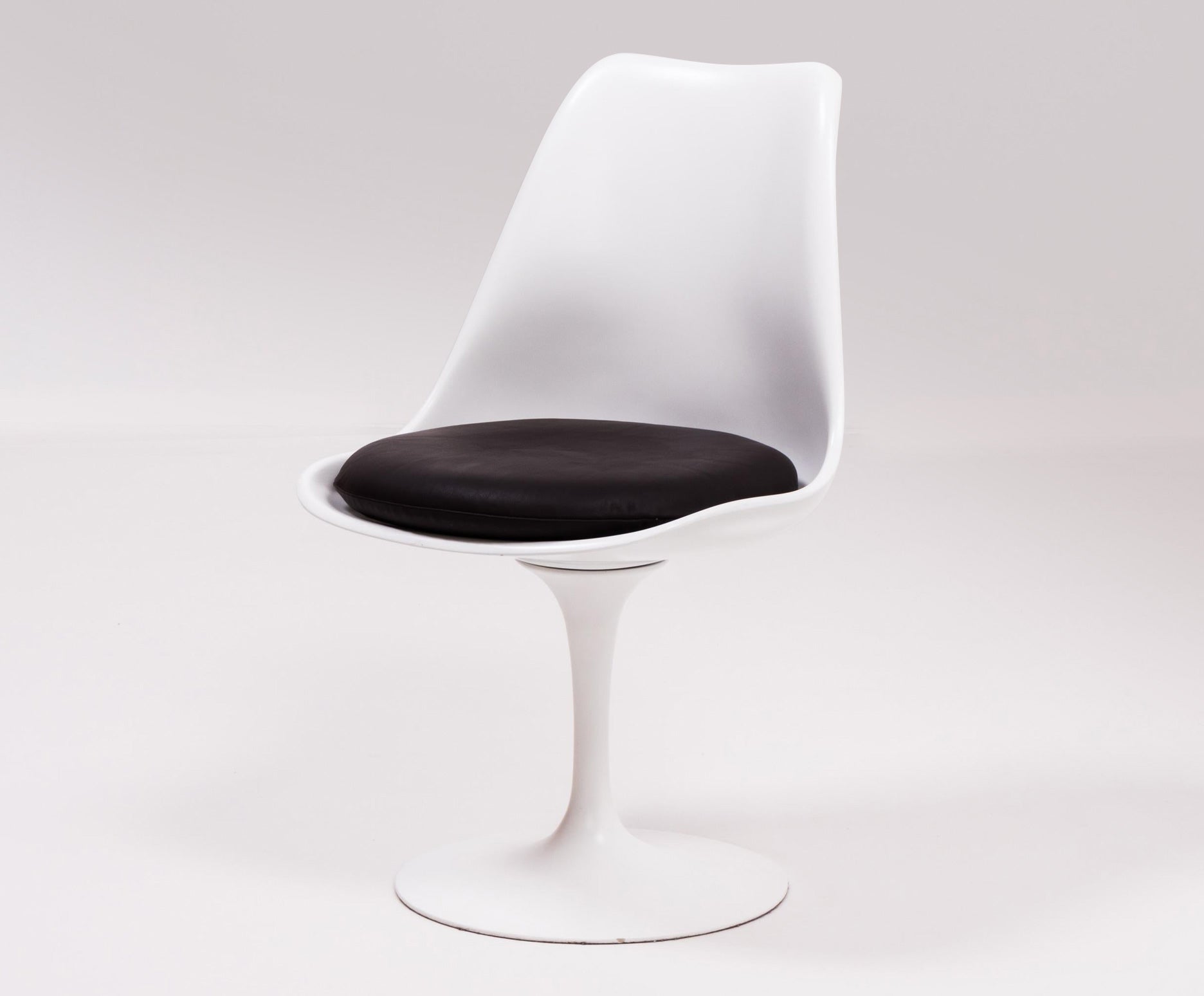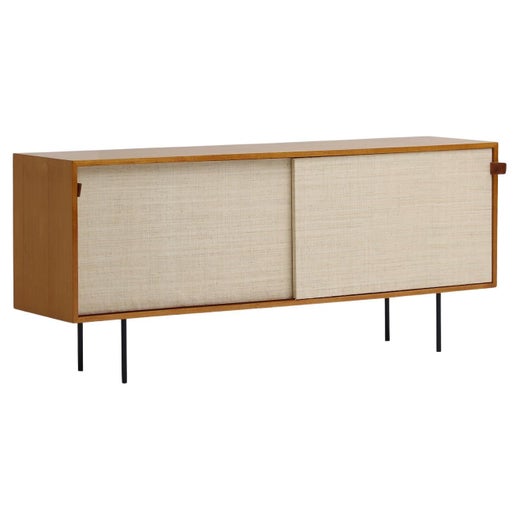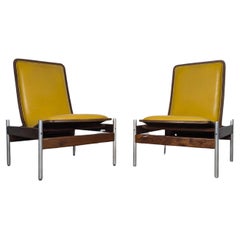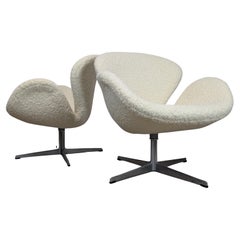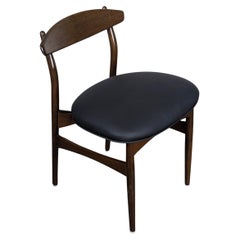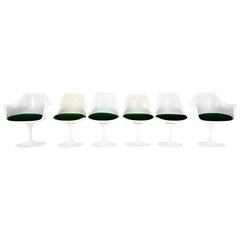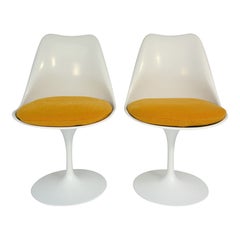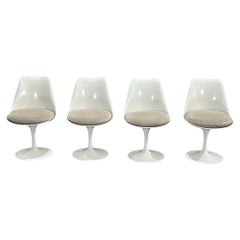Mid Century Modern Tulip Armless Dining Chairs by Eero Saarinen for Knoll, c1960
About the Item
- Creator:Knoll (Designer),Eero Saarinen (Designer)
- Design:Tulip Armless ChairSaarinen Pedestal Series
- Dimensions:Height: 32 in (81.28 cm)Width: 19 in (48.26 cm)Depth: 21.25 in (53.98 cm)Seat Height: 18.5 in (46.99 cm)
- Sold As:Set of 5
- Style:Mid-Century Modern (Of the Period)
- Materials and Techniques:
- Place of Origin:
- Period:
- Date of Manufacture:1960s
- Condition:Wear consistent with age and use. Minor losses. Original condition. Would benefit from new upholstery. Base has chipping and surface level scratches. All Chairs Swivel nicely.
- Seller Location:Chino Hills, CA
- Reference Number:1stDibs: LU7628244820132
Tulip Armless Chair
With his iconic Pedestal collection, architect and designer Eero Saarinen (1910–61) vowed to “clear up the slum of legs,” as he described the visual clutter resulting from traditional furniture frames in a 1956 TIME magazine cover story. Central to this endeavor is the Pedestal table, whose round top on a slender, graceful pedestal would become a near ubiquitous — and oft-imitated — form. The Tulip armchair and the Tulip armless chair continue this streamlining in Saarinen’s modern, space-age aesthetic.
With its simplified silhouette and fiberglass body, the Tulip armless chair is at once elegant and industrial, a feat that Saarinen continually mastered in mid-century modern works ranging from furniture to architecture (think the St. Louis Arch and the TWA Terminal at New York’s John F. Kennedy Airport, which has reopened as a hotel). The designer originally tried to cast the entire seat in fiberglass, pushing the envelope of modern furniture production, but, to ensure stability, he eventually settled on a cast-aluminum base and fiberglass seat. In 1957, the chair was put into production through Knoll — Saarinen knew pioneering American designer Florence Knoll from his days at the Cranbrook Academy of Art, where he taught and took on design projects for the school. It has remained one of the legendary firm’s most popular seats ever since.
Given its sculptural shape, the Tulip armless chair can be paired with a Saarinen table for a wholly modern dining set — as it appears throughout the TWA Hotel — or hold its own as a side or accent chair, a popular touch by top residential designers today. The Velcro-attached seat cushion is available in over a dozen upholstery options, though the thoroughly space-age cherry red is undoubtedly the most famous.
Knoll
As a company that produced many of the most famous and iconic furniture designs of the 20th century, Knoll was a chief influence in the rise of modern design in the United States. Led by Florence Knoll, the firm would draw stellar talents such as Ludwig Mies van der Rohe and Eero Saarinen into its compass. Their work would help change the face of the American home and office.
The company was formed in 1938 by the German immigrant Hans Knoll. He first worked with his fellow ex-pat, the Danish designer Jens Risom, who created furniture with flowing lines made of wood. While Risom served in World War II, in 1943 Knoll met his future wife, Florence Schust. She had studied and worked with eminent emigré leaders of the Bauhaus, including Mies, Walter Gropius and Marcel Breuer. She won Knoll over with Bauhaus notions of industrial arts, and an aesthetic that featured flat and tubular metal frames and angular forms. When Hans died in a car crash in 1955, Florence Knoll was appointed head of the company. It was as much through her holistic approach to design — a core division of the firm was dedicated to planning office systems — as Knoll's mid-century modern furnishings themselves that she brought about the sleek and efficient transformation of the American workplace.
Today, classic Knoll furnishings remain staples of modern design collections and decor. A history of modern design is written in pieces such as the elegant Barcelona chair — created by Mies and Lilly Reich — Saarinen’s pedestal Tulip chair, Breuer’s tubular steel Wassily lounge chair and the grid-patterned Diamond chair by Harry Bertoia.
As you can see from the collection of these designs and other vintage Knoll dining chairs, sofas and tables on 1stDibs, this manufacturer's offerings have become timeless emblems of the progressive spirit and sleek sophistication of the best of modernism.
- ShippingRetrieving quote...Shipping from: Chino Hills, CA
- Return Policy
More From This Seller
View AllVintage 1960s Norwegian Mid-Century Modern Lounge Chairs
Naugahyde, Walnut, Bentwood
Vintage 1960s Danish Mid-Century Modern Swivel Chairs
Metal
Vintage 1960s Norwegian Mid-Century Modern Armchairs
Teak
Vintage 1960s Danish Mid-Century Modern Side Chairs
Beech
Vintage 1960s Danish Mid-Century Modern Dining Room Chairs
Cord, Oak
Vintage 1960s Danish Mid-Century Modern Dining Room Chairs
Fabric, Teak
You May Also Like
Vintage 1970s Central American Mid-Century Modern Chairs
Aluminum
Vintage 1970s German Mid-Century Modern Chairs
Aluminum
Vintage 1970s Central American Mid-Century Modern Chairs
Aluminum
Mid-20th Century American Mid-Century Modern Chairs
Fabric, Plastic
Mid-20th Century American Mid-Century Modern Armchairs
Aluminum
Vintage 1950s American Dining Room Chairs
Aluminum
Read More
The 21 Most Popular Mid-Century Modern Chairs
You know the designs, now get the stories about how they came to be.
A Short History of the World’s Most Iconic Designs
Of the million-plus items on 1stdibs, some seem to have transcended time, looking as fresh today as when they were first produced. The pieces highlighted on our new Iconic Designs page stand out for longevity, functionality and quality of design and manufacture — just the tonic for the present unsettled moment.
